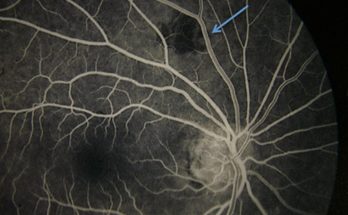For patients dealing with gum recession can be a frustrating and embarrassing experience. As a trusted general dentist in Montville, NJ, our practice is dedicated to providing personalized and effective solutions for patients with gum recession. One such solution is dental bonding, a minimally invasive and conservative approach that can help repair and restore the appearance of teeth affected by gum recession.
By using a tooth-colored resin material, dental bonding can effectively cover exposed roots, reduce sensitivity, and enhance the overall aesthetics of the smile, all while promoting a healthy and confident smile.
What is Dental Bonding?
Dental bonding is a cosmetic dental procedure that involves the application of a tooth-colored resin material to the teeth. The resin is molded and shaped to match the surrounding teeth, creating a natural-looking appearance. Dental bonding can be used to repair a variety of dental problems, including chipped or cracked teeth, gaps between teeth, and discoloration.
What Are The Benefits of Dental Bonding for Gum Recession?
Here are some of the advantages of dental bonding for gum recession:
Aesthetic Benefits
- Improved appearance: Dental bonding can enhance the appearance of teeth affected by gum recession, making them look more natural and attractive.
- Matching tooth color: The bonding material can be matched to the color of the surrounding teeth, creating a seamless blend.
Functional Benefits
- Reduced sensitivity: Dental bonding can cover exposed roots, reducing sensitivity to hot and cold temperatures.
- Improved chewing function: Bonding can help restore the natural shape and function of the tooth, making it easier to chew and bite.
Convenience and Cost Benefits
- Minimally invasive: Dental bonding is a non-invasive procedure that requires minimal preparation and no surgery.
- Quick procedure: Bonding procedures typically take less than an hour to complete.
- Cost-effective: Dental bonding is often less expensive than other treatment options, such as dental crowns or surgery.
Durability and Maintenance Benefits
- Durable: With proper care, dental bonding can last for many years.
- Easy maintenance: Bonded teeth can be maintained with regular brushing, flossing, and dental check-ups.

How Does Dental Bonding Work for Gum Recession?
Dental bonding is a cosmetic dental procedure that can be used to repair and restore teeth affected by gum recession. Here’s a step-by-step explanation of how dental bonding works for gum recession:
Preparation
- Cleaning and examination: The dentist will thoroughly clean and examine the affected tooth to determine the extent of the gum recession.
- Etching the tooth surface: The dentist will etch the surface of the tooth to create a rough texture for the bonding material to adhere to.
Bonding Procedure
- Applying a bonding agent: The dentist will apply a bonding agent to the etched tooth surface to help the resin material adhere.
- Applying the resin material: The dentist will apply a tooth-colored resin material to the affected area, molding and shaping it to match the surrounding teeth.
- Hardening the resin material: The dentist will use a special light to harden the resin material, bonding it to the tooth.
Shaping and Polishing
- Shaping the bonded area: The dentist will shape the bonded area to ensure a natural-looking appearance.
- Polishing the tooth: The dentist will polish the tooth to remove any rough edges or imperfections.
Follow-up Care
- Follow-up appointments: The dentist will schedule follow-up appointments to check on the bonded area and ensure that it is holding up well.
- Good oral hygiene practices: The patient will need to practice good oral hygiene habits, including regular brushing and flossing, to maintain the health and appearance of the bonded tooth.
Dental bonding offers a viable solution for patients with gum recession. This minimally invasive and conservative approach can be used to repair gum recession, improve oral function, and enhance aesthetics. While dental bonding may not be suitable for all cases of gum recession, it can be a valuable treatment option for patients seeking a quick, easy, and cost-effective solution.




